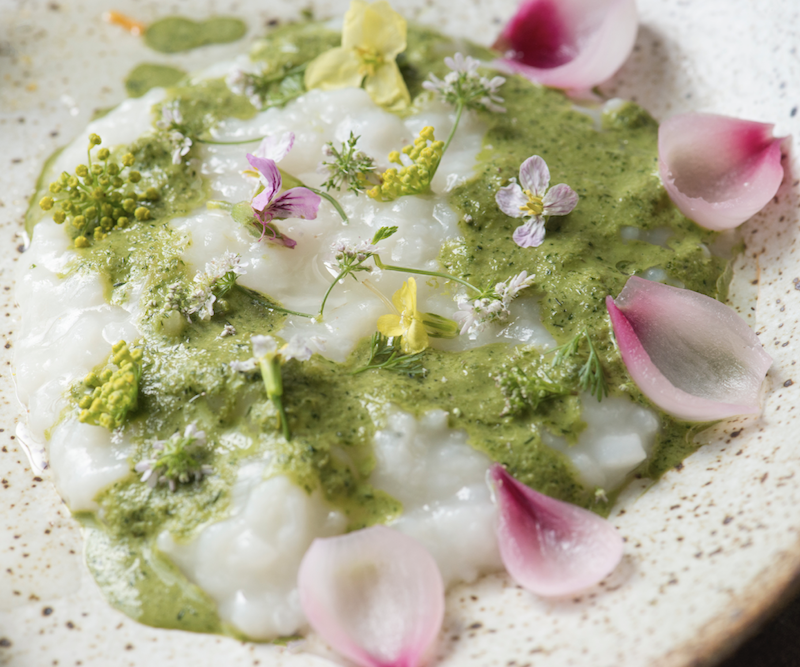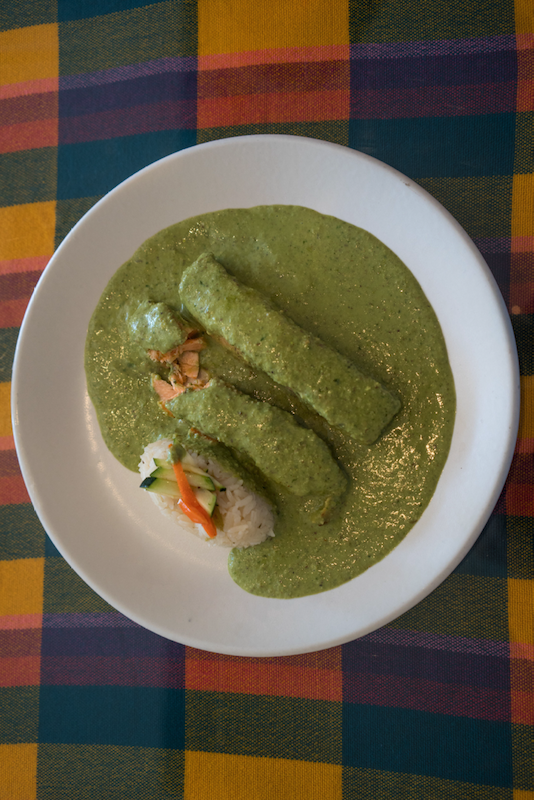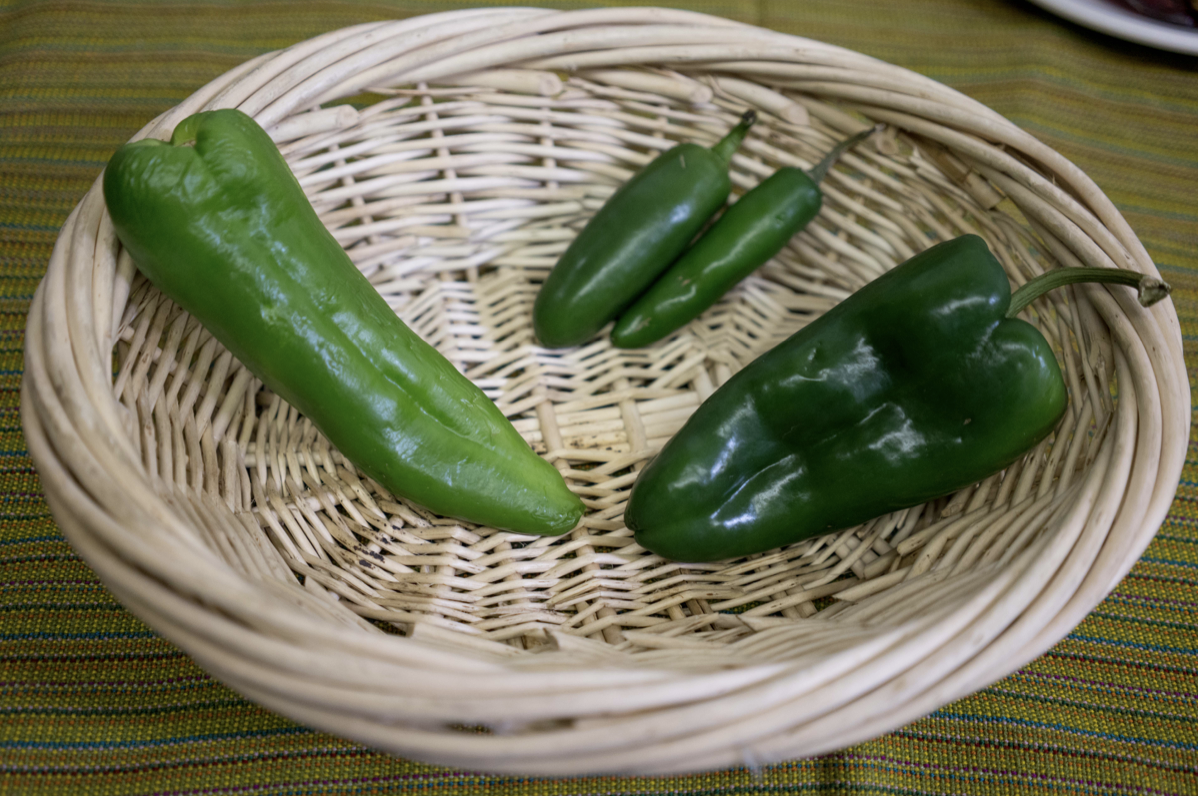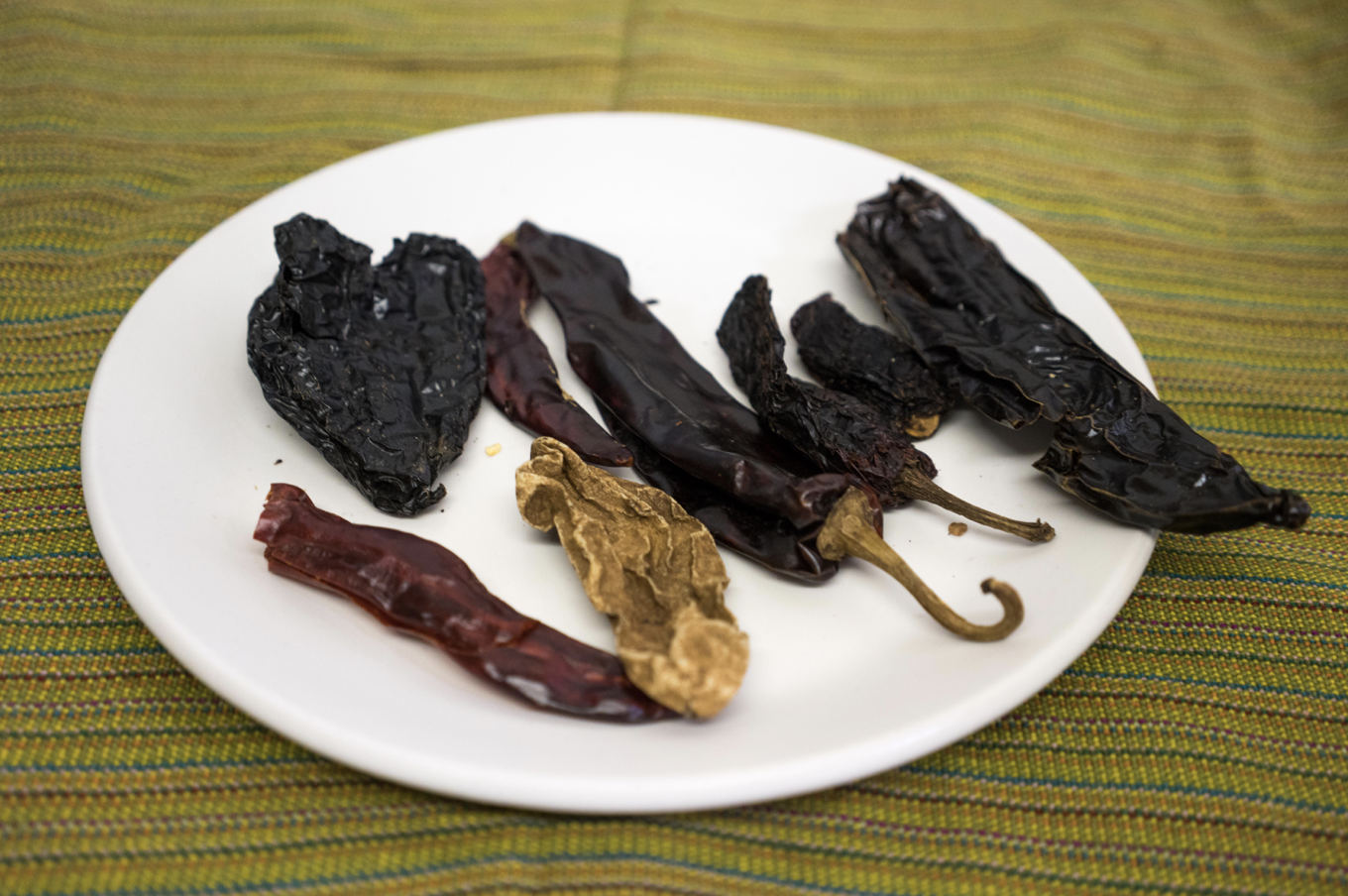When I was a young dancer, many, many years ago, I learned the well-known aphorism, “Don’t let them see you sweat.” In the ballet world, this is largely true. It is why I never sit too close to the stage. I, like many in the audience, want to allow myself a momentary suspension of disbelief: to imagine that this beauty emerges from magic, not grindingly, physical, relentless work.
As I dip my toe further into the world of food, cooks, chefs and purveyors, I am becoming more and more aware of the effort, care and experience behind the exquisite plate of deliciousness that I often devour in minutes. A growing media industry profiles the story of exceptional chefs, many of whom flame out in a few years. The gap between what is envisioned and what is possible is often too great to imagine or accept.
The back story is the front story in this week’s post. In this case, I discovered individuals who are able to balance the wobbly line between what is and what could be—lessons for us all.
A hike in Ojai
Early this year, shortly after the extraordinarily destructive Thomas Fire, Julia, a friend from Germany, and I travelled to Ojai. We were not there to gawk, as this was to be a restful few days planned well before the fires. We soldiered on, driving the back route that has always been my favored way into Ojai. In times past, this is a route to decompression, beginning in Santa Clarita, where highway 126 leads through California farm country and quiets even further at Santa Paula, where the 150 cuts off. But this year, the 150 was a moonscape: acres and acres of blackened trees, a wall or foundation, sometimes the only evidence of a home. The downtown area of Ojai was untouched. Other than the residual smell of smoke and the many banners expressing gratitude to the first responders, this epic story could be forgotten at least momentarily.
Shelf Road Trail mini landslides, not visible unless we look carefully.
The Shelf Road Trail was open and despite the burn, offered the expansive, heart opening views that are Ojai. A small group of engineers and soils scientists from nearby Ventura were gathered at the trail’s mouth, assessing the damage and the potential danger of future rain storms. Julia and I had been looking out at the horizon and up at the sky, but not at our feet, where hopeful shoots of green were sprouting here and there through the bare earth. Dawn, one of the soil scientists, pointed out the various mini-slides and described the back story she carried as part of her deep knowledge. “Even though you think you see green stuff, there is a slide here a slide there. Our normal flow is loosened; our vegetation will never be the same again. It is a high risk for mud slides for seven years.” Our hike ended after a short mile, when the damage became increasingly noticeable.
This experience, while sobering, leaves me with a sense of gratitude to the people who choose to be extraordinarily aware and willing to see and act on what is hard to acknowledge. Dawn left us with an acceptable truth: “Stay on the trail please. We need these bits of green to grow and flourish.”
Mise en Place
This past week, I had the honor of watching one of our gifted East Side chefs Minh Phan prepare one of her signature dishes, porridge. I witnessed something far more layered and physically beautiful than any pre-conceived idea of this “homely dish.” The day began at Muir Ranch, a three-acre school garden located behind Muir High School in Pasadena. Minh wandered the rows of mustard greens, amaranth, fennel and chard, picking a few leaves or fronds of each. Her greatest find was the variegated leaves of geranium. Other than fennel, most of these “ingredients” seemed more at home in a vase than on the stove. I was wrong.
The next phase was Minh’s preparation of her mise en place. A quiet hour went by as she organized a food based still life that would challenge any Dutch Renaissance home maker. Along with her prepped ingredients, rose geranium pickled baby onions, Makrut lime compound butter and what she describes as Asian mirepoix—ginger, shallots and lemon grass—she placed at the ready edible flowers, vegetables and herbs, kumquats and habanero chilies, both as inspiration and reminder.
Minh Phan’s Mise en Place for Vegan Porridge. Photo by Ann Cutting.
Within the next hour or so, rice porridge was cooking slowly. Minh sources every ingredient with an eye to quality, saying, “People understand that a steak is worth $15, but to most a bowl of porridge –that’s hard.” But this food’s value is based on a commitment and ability to coax elusive and subtle flavors from personally foraged ingredients and carefully constructed mini-dishes. Minh describes her relationship to the food community--purveyors, makers and customers--as symbiotic: taking and giving back. She recently donated her time and food to a fundraiser for Muir Ranch. She frequents the Hollywood Market, as so many of her food suppliers from ranches and farms around Central and Southern California sell there regularly, including the source for so much of her inspiration, Koda Rice Farms.
For those of us lucky enough to partake, Minh’s dishes are a form of exquisite alchemy--amaranth, so prevalent that it is considered by some a weed, becomes a delightfully light tempura and nettles, fennel and cilantro are blended with coconut milk for an earthy yet light green sauce.
The finished dish, “Vegan Porridge,” with pickled baby onions, negi (Japanese green onion) infused oil, green sauce of nettles, fennel, cilantro and coconut milk served with amaranth tempura –yum! Photo by Ann Cutting.
The Archeology of Mole
Benjamino Cano of Moles La Tia in East Los Angeles, mole maker for over 40 years and his El Pistachio mole. He cannot choose a favorite mole, saying they are like children, each different, but equally loved. Photos by Sally Krueger-Wyman.
And last, but certainly not least, is one of my most beloved food experiences and the inspiration for this post. Eating mole, a deceptively simple looking sauce originating in Pueblo and perfected in Oaxaca, is my idea of a beautiful journey filled with exciting discoveries. A typical mole is made up of more than 30 ingredients that somehow manage to remain distinctive and at the same time cohesive.
Some of the more than 30 ingredients in a mole. Photos by Sally Krueger-Wyman.
As I become more convinced that we live in one of the major food capitals in the world, I returned to Moles La Tia in East Los Angeles to deconstruct this dish with the help of chef Benjamino Cano and the restaurant’s long time manager, Alfonso Hererra.
Benjamino’s moles begin the night before. He toasts and soaks various chilies before grinding them along with seeds and nuts. There is broth, tortilla or bread, spices including cumin, and sometimes cinnamon infused chocolate for Mole Negro, considered the pinnacle of moles by many aficionados. I am a Pipianes type of gal, gladly trading the complexity of negro for the brightness and freshness of a pepian loaded mole. After about four hours of active work time, Benjamino’s Mole is done. He rotates making the various types on Moles La Tia's menu, to allow for time and for the tastes to meld. Day two or three is better than day one for mole.
Alfonso, who manages many of this family’s enterprises, is committed along with the owner to continuing mole despite its enormous time investment and consequent expense. The family runs a bakery and catering company, as tamales and other more quickly made food, help subsidize this true labor of love. During my visit, he insisted on treating me to one of his recommended moles, El Pistachio, a pistachio mole paired with grilled salmon. It was memorable enough to haunt me whenever my thoughts turn to mole.
My good friend and food making co-explorer, Desiree Zamorano and I made mole together, once. After eight hours and a champagne break, we were finished in more ways than one.
And to conclude --Is the Back Story the Magic?
I realize now, that knowing more about how something is formed creates its own kind of alchemy. There is something heroic and authentic in those who pursue complexity and challenge. Dawn watches out for those of us, who choose to live near some of the world's most dynamic mountain ranges. Minh leads us gently and persistently to consider the most humble growing things around us as a potential unlocked treasure and to honor and support the high-quality food makers in our state. And every day, in a simple dining room thanks to chef Benjamino, we can enjoy one of the world’s most rarified of foods. One taste and you know: it is magic. Thanks to you all.
And for this week, instead of a recipe or two, I leave you with something equally delicious--a few moments from the revelatory film, In the Steps of Trisha Brown.













